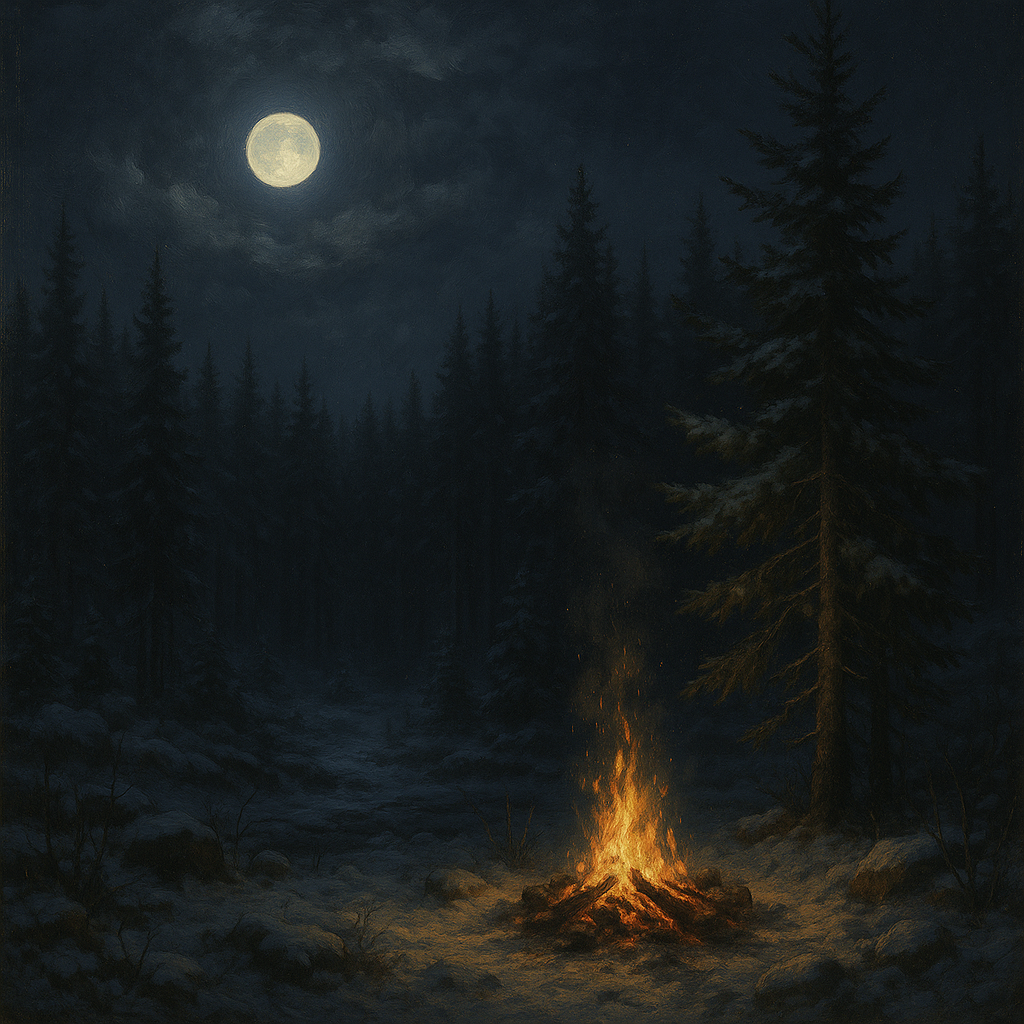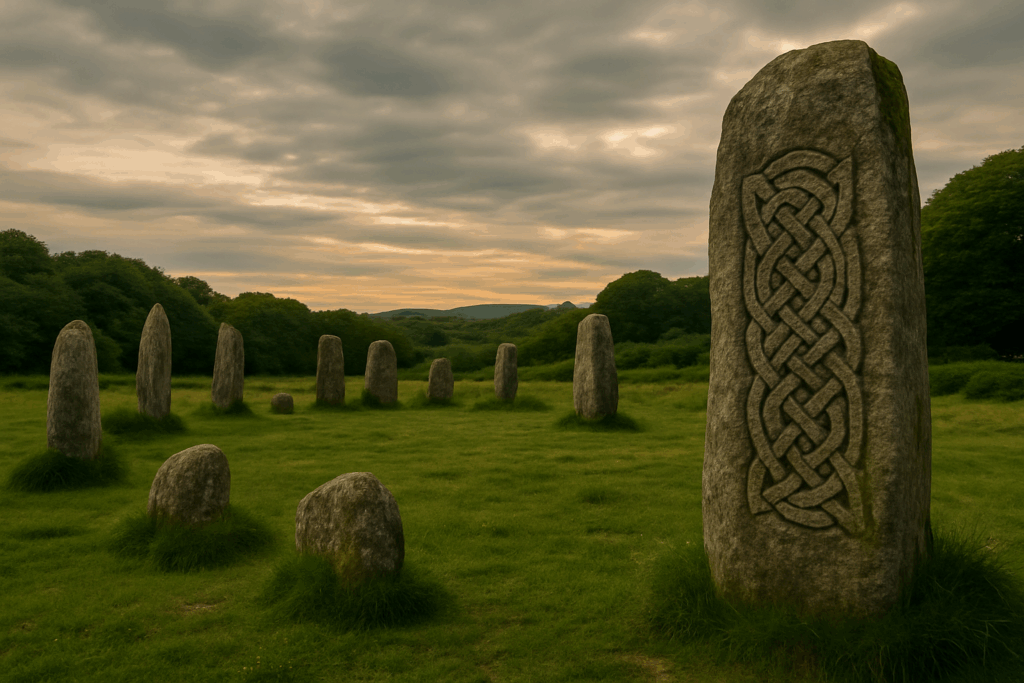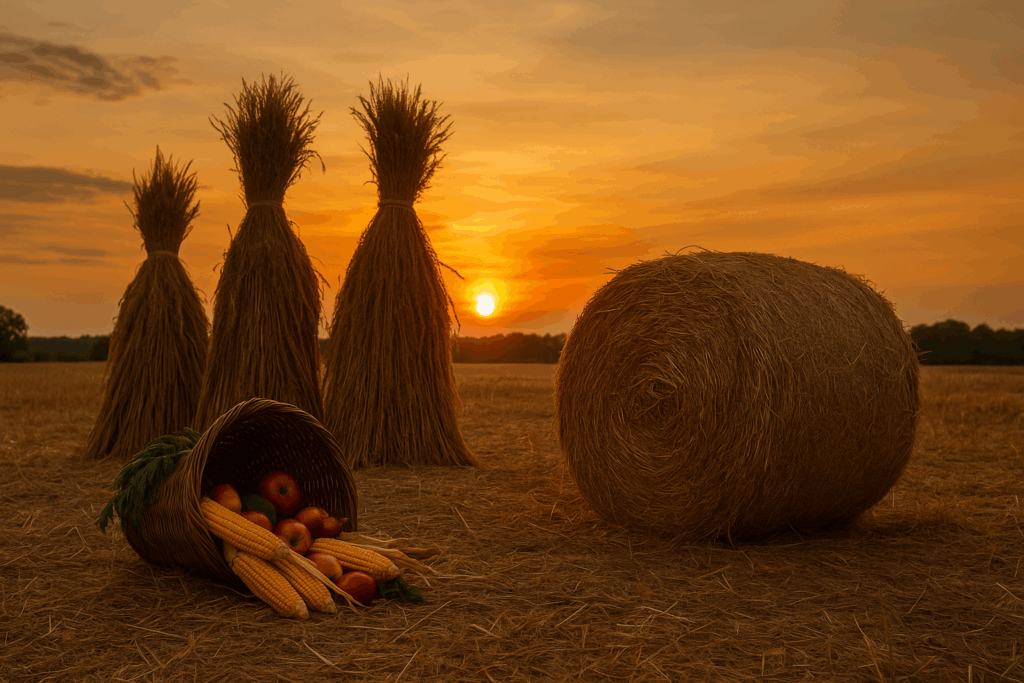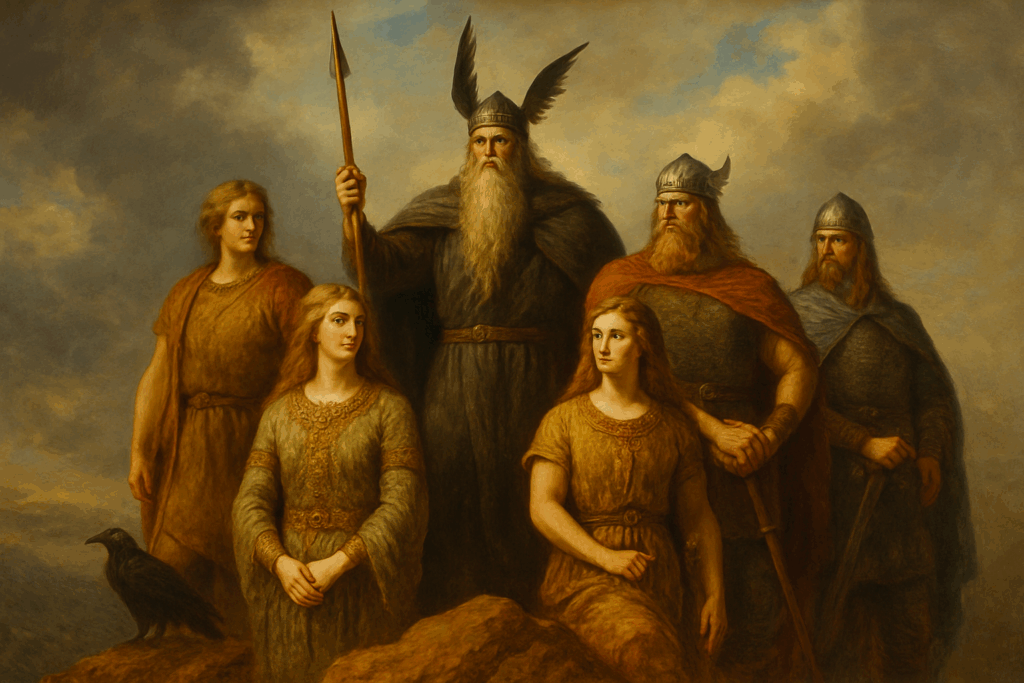🌑 November 22 – The Bonefire Vigil

Community, storytelling, and warmth in shared sacred space.
Night descends early now, soft and deep, folding the world in shades of charcoal and silver. The stars seem closer, the cold sharper, the silence more absolute. Yet through that vast stillness comes a flicker — orange, gold, alive. Somewhere in the darkness, a circle of fire burns, and voices rise and fall around it like ancient music. This is The Bonefire Vigil, the heart of late November — a night of warmth, storytelling, and shared presence, when the living gather to honor life, death, and the spaces between.
The word bonefire is old — the ancestor of our modern “bonfire.” It comes from the practice of burning bones in sacred fires, a ritual act of offering and remembrance. The Celts and other ancient peoples lit such fires during the dark season not only for heat, but to sanctify the transition between worlds. The bones burned were often those of animals that had sustained the community — an acknowledgment of gratitude and continuation. The smoke rose as prayer, carrying memory and promise to the unseen realms. Thus, a bonefire was more than flame; it was communion.
Tonight, as winter deepens and the world’s pulse slows, we rekindle that ancient act — not necessarily with real bones, but with intention, memory, and community. The Bonefire Vigil is a gathering of light within darkness, a collective heartbeat beneath the long night. It is the time to come together, to tell stories, to share food and laughter, to keep the fire of spirit alive as the world around us turns cold and still.
In the old villages, this was the night when people would gather in a central place — the commons, the longhouse, the hearth of the largest dwelling. Each person would bring something: a log for the fire, a dish to share, a tale to tell. As the flames rose, faces glowed with warmth and shadow. The young listened, the elders spoke, and the invisible ones — ancestors and spirits — were said to draw near, drawn by the light and the sound of their names. The vigil would last deep into the night, a shared act of endurance and joy.
To recreate this spirit today, you need not a great firepit or a crowd; you need only warmth, light, and intention. Gather those you love, or even a few close souls, and prepare a space where flame can safely burn — a hearth, a fire bowl, or even a cluster of candles. Each flame represents a story, a life, a bond. As the light grows, let conversation flow naturally, but with reverence. Speak not of trivial things, but of memory, of gratitude, of the small miracles that carry you through the dark.
If you keep the vigil alone, you are still part of the circle. The Bonefire burns in every heart that tends it with awareness. Sit before your flame and feel the invisible company around you — ancestors, old friends, teachers, spirits of the land. They gather, too, for warmth and remembrance. Whisper:
“Come sit by this flame, you who have walked before.
Share in the warmth; be at peace once more.”
You may feel the air shift — a hush, a sense of presence, a deep calm that settles through the space. That is the fire’s oldest magic: it thins the veil between worlds not through summoning, but through welcome.
The fire itself is a teacher. Watch it closely — how it consumes and transforms, how it dances with purpose but no haste. Fire is the element of connection, the bridge between matter and spirit. It releases, purifies, and sustains. In the old bonefires, the burning of remains was both reverence and renewal — a reminder that nothing truly ends, but returns to the elements to be reborn. As you watch the flames, reflect on this truth. The same energy that burns before you burned in the hearths of your ancestors, in the sun above the fields, in the stars that shape our sky. Fire is continuity made visible.
If you wish, use this night to share or record stories — family tales, ancestral memories, or even myths that carry timeless wisdom. Storytelling is one of the oldest forms of magic; each word is a spark, each listener a vessel for light. In the Celtic lands, storytellers were keepers of lineage, charged with remembering the past so that the future might remain whole. When we tell stories, we weave threads between generations, between the living and the dead.
Let the fire be your rhythm. Between stories, fall into silence — let the crackle of flame and the sigh of night fill the space. In those quiet intervals, listen. You may hear a shift in the wind, a pop in the wood, or a distant sound that feels older than the world. These are the whispers of the unseen, joining your vigil.
Offerings are traditional at such fires. A piece of bread, a few drops of drink, a handful of herbs — all may be placed into the flame with a word of thanks. You might say:
“For warmth and life, for memory and return,
I offer this gift to the unseen fire.”
The smoke that rises carries your gratitude into the sky, joining the breath of the world.
The Bonefire Vigil is also a ritual of community — even beyond people. It reminds us that warmth, shared, is magnified; that isolation melts in the presence of light. The fire’s circle is both literal and symbolic — a space where equality reigns, where all faces glow the same in the amber light. In that glow, you see the truth: every soul burns with the same spark, every life is a flicker of the same eternal flame.
When the night deepens, let the fire burn lower. Sit quietly before the embers, glowing red and gold. This is the heart of the vigil — the moment when silence takes over, when words fade and only presence remains. The embers are like memory itself: glowing fragments of what once was, holding heat long after the flame. Watch them carefully. Each pulse of light is a breath, a heartbeat, a reminder that warmth endures.
If you wish, end your vigil with a shared blessing, spoken aloud or silently:
“May the fire in our hearts never fade.
May warmth and memory light our way.
May all beings, seen and unseen,
Rest in peace, hope, and renewal.”
Then, when it feels right, extinguish the fire — not abruptly, but gently, letting it die with respect. The smoke that rises is not an ending, but a continuation. The circle remains, even as the light retreats into coals, into memory, into spirit.
When dawn comes, you will notice how clean the air feels, how soft the silence has become. The Bonefire Vigil lingers — in the warmth of your hands, in the echo of laughter, in the knowing that you are part of something unbroken. The light you shared will ripple outward invisibly, a warmth that others may feel without knowing why.
The Bonefire Vigil teaches that community is sacred fire — it must be tended, shared, and honored. In gathering, we remember that the flame of life burns brightest not alone, but together. And when we part, we carry embers with us — the unseen sparks that sustain us through the long nights ahead.





